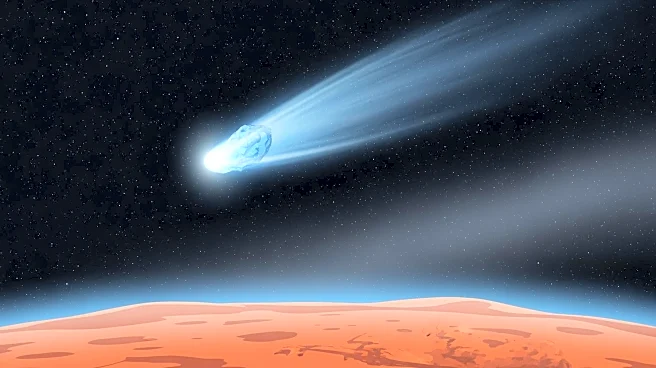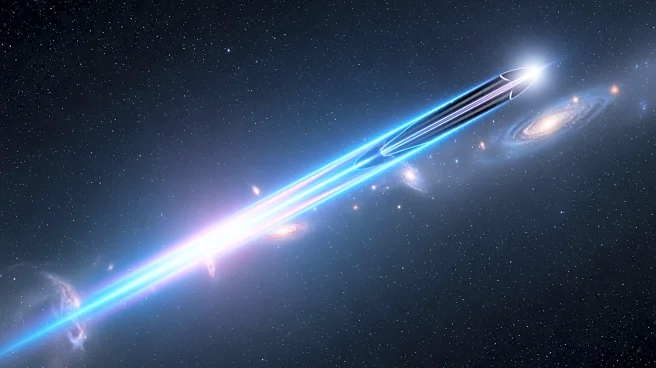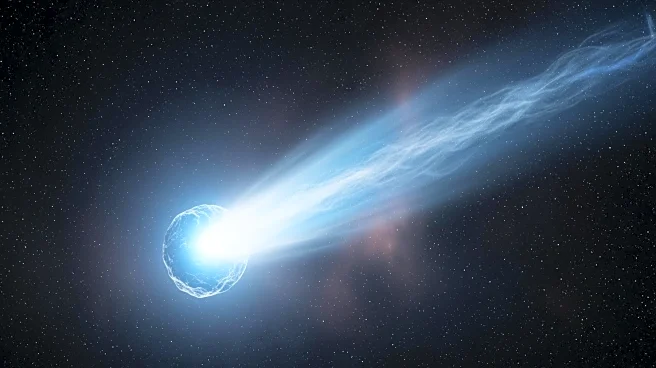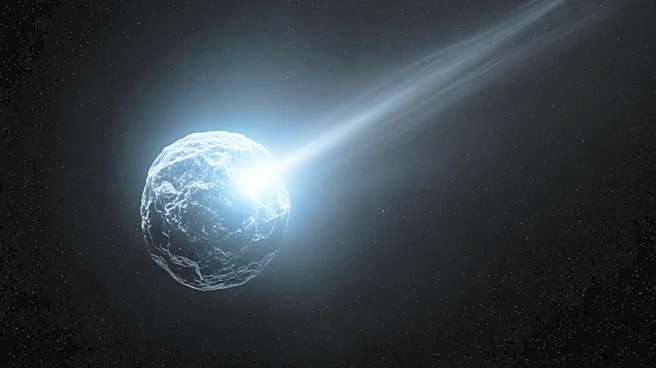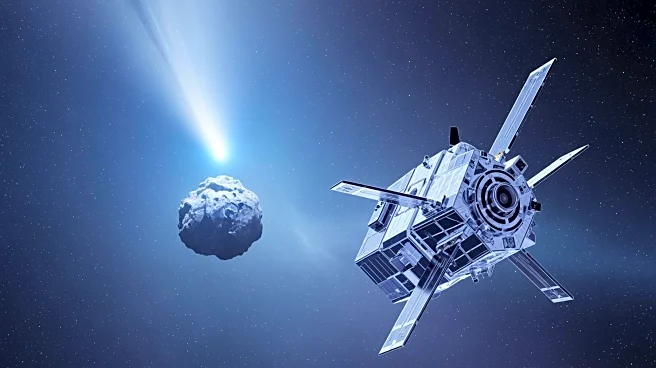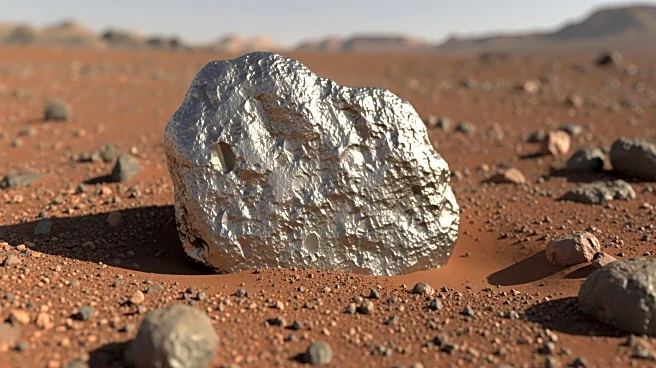What's Happening?
NASA has released a series of new images and animations of the interstellar comet 3I/ATLAS, which is currently speeding out of the inner solar system. The United Nations has confirmed that the comet is central
to a global planetary-defense drill, aimed at practicing precise position measurements of a comet. This exercise is part of the International Asteroid Warning Network's ongoing efforts to improve techniques for tracking potentially hazardous objects. The comet, discovered by the NASA-funded ATLAS survey telescope in Chile, is only the third known interstellar object to pass through our solar system. It poses no threat to Earth, as it will pass no closer than 170 million miles from the planet. Observations suggest the comet's nucleus is a few kilometers wide and possibly older than our solar system.
Why It's Important?
The comet 3I/ATLAS provides a rare opportunity for scientists to study a fragment from another solar system, potentially offering insights into different planetary formation environments. The UN's involvement in a planetary-defense drill underscores the importance of global coordination in tracking celestial objects that could pose future threats. This exercise is a proactive measure to ensure readiness for any potential impact risks. The comet's unique chemical composition, dominated by carbon dioxide, challenges existing models of cometary formation and behavior, prompting further scientific inquiry. The event also highlights the contrast between scientific evidence and speculative theories, emphasizing the need for careful observation and analysis in the age of online rumors.
What's Next?
The UN/IAWN campaign will continue with a series of scheduled activities, including a workshop and observing window, culminating in a close-out teleconference in February 2026. Scientists will continue to monitor the comet's trajectory and composition, using data from various NASA missions and telescopes. The ongoing observations may reveal more about the comet's interior as it erodes near the Sun. The exercise serves as a rehearsal for future interstellar visitors, preparing the scientific community for rapid response and data sharing. The comet's passage is expected to inspire further research into interstellar objects and their implications for planetary science.
Beyond the Headlines
The comet's passage through the solar system is not only a scientific event but also a cultural one, as it sparks public interest and debate about the possibility of alien life. The UN's planetary-defense drill highlights the ethical responsibility of global agencies to protect Earth from potential celestial threats. The comet's unique chemical makeup may lead to new theories about the conditions in other star systems, influencing future astronomical research. The event serves as a reminder of the importance of international collaboration in addressing global challenges, both in space and on Earth.



